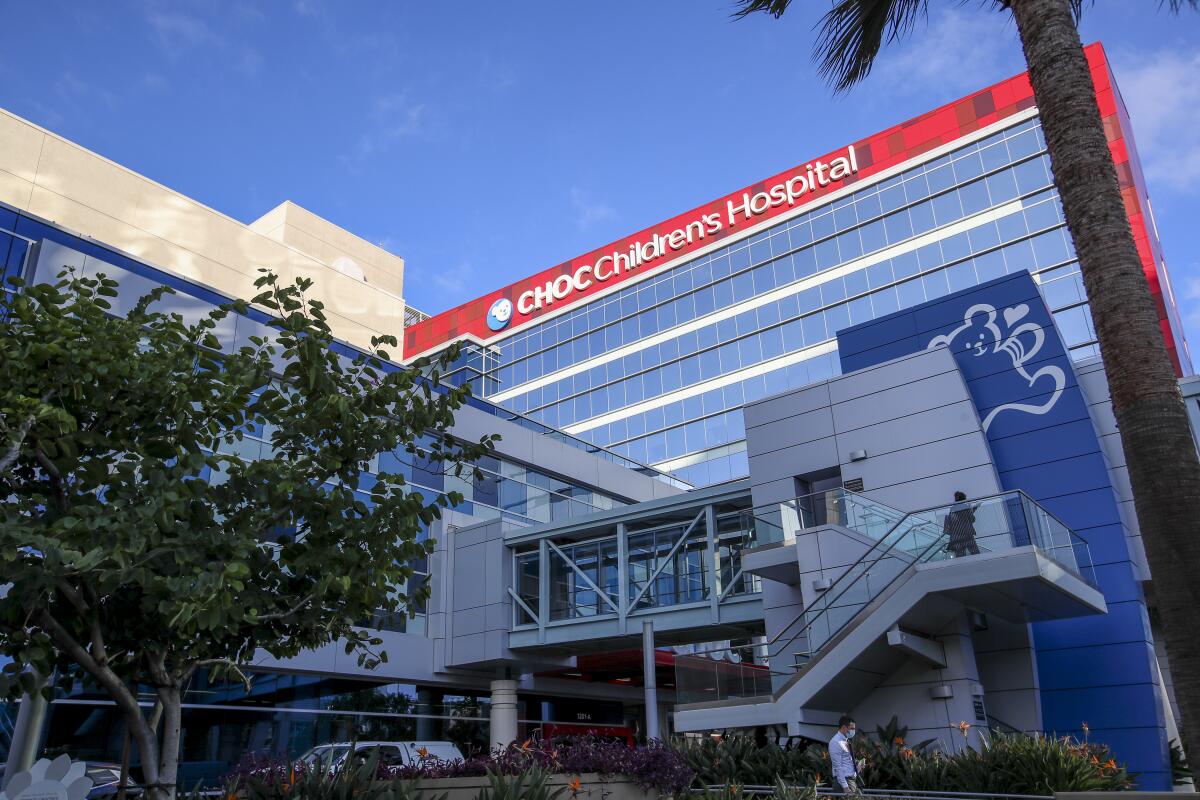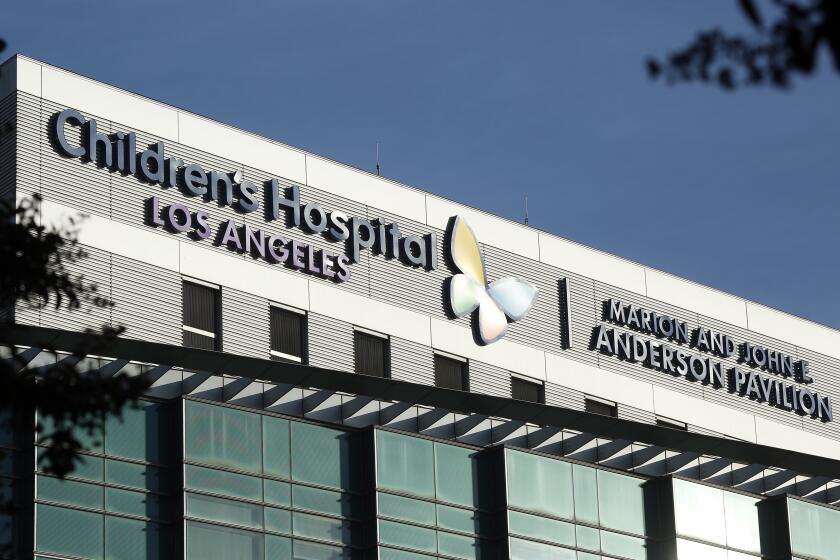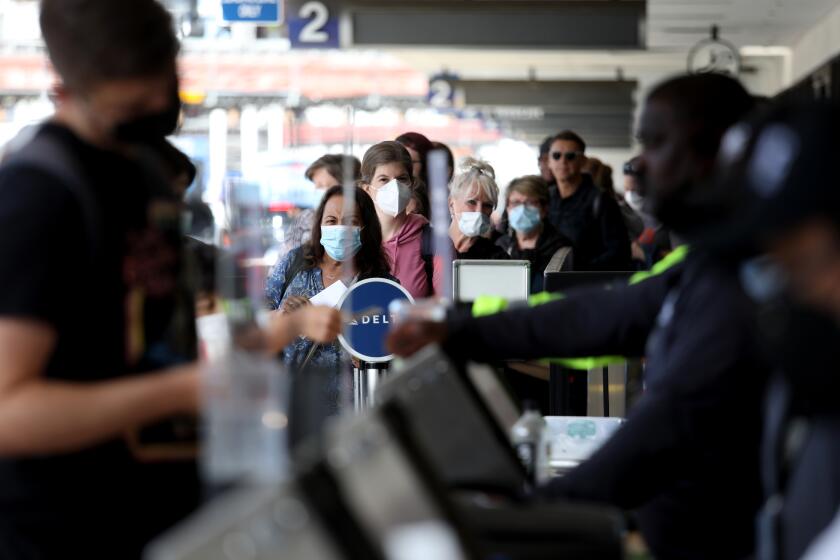Op-Ed: RSV is packing hospitals with sick kids, but it can be contained

- Share via
Another fall season, another virus in the news: The respiratory syncytial virus, commonly known as RSV, is filling up emergency rooms and hospital beds in many parts of the country.
RSV has been among the mix of seasonal viruses that surge in America every fall and winter — but it has been severe this year. Data indicate at least one in every 500 infants 6 months or younger has been hospitalized with RSV since early October. Orange County declared a health emergency over the spread and cases are rising in L.A. County.
The likely reason for this surge is COVID-19. For RSV and other relatively common infections, people have built up some immunity over the years from repeated infections. But not everyone, particularly infants and young children, has been exposed to the virus. And exposure dropped during the pandemic, when COVID lockdowns and other mitigation tools decreased infection. As the U.S. has reopened, people are once again encountering each other in conditions likely to spread respiratory disease — now with lower immunity to infections they largely dodged during the last two years, and with less masking and distancing to stem the spread.
With Orange County declaring a health emergency due to high RSV cases, concern about the virus is peaking. Here’s what you should know about it.
Most RSV infections cause mild disease and resolve on their own in a week or two. But in some people, especially young infants and older adults, this virus can also cause more severe disease such as pneumonia and bronchiolitis (inflammation of the small airways in the lung). Some severe cases may need to be hospitalized, hence the occupied hospital beds and packed pediatric ERs in many regions.
Fortunately, RSV vaccines are around the corner. A vaccine targeting older adults may be licensed as early as next year. A vaccine for pregnant women, to protect their young infants through the transfer of antibodies across the placenta, may soon follow.
But for now, we have to rely on non-vaccine public health measures to protect those at high risk of RSV. That means public health officials need to revive some protections from their COVID-19 response — and correct communication and policy missteps that dogged the pandemic. Better handling RSV offers a much-needed chance to reestablish trust and efficacy in public health.
To start, health officials should rely on the latest science in their recommendations to the public and clearly communicate their reasoning based on that science. RSV guidance from the Centers for Disease Control and Prevention focuses on several protective measures for anyone showing cold-like symptoms, such as covering coughs and sneezes with a tissue or sleeve, hand-washing, avoiding close contact with others and cleaning frequently touched surfaces. Unfortunately, masks are conspicuously absent from this list.
This calls to mind the confusing messaging on masks early in the COVID-19 response. The CDC initially recommended against masks, in part because there was a shortage of medical masks and authorities wanted to ensure the supply was not diverted to lower-risk individuals. And, at the time, the data on how well various types of masks prevent respiratory viruses in non-healthcare settings was limited. Most importantly, though, public health authorities were using an outdated model for how the disease spread that de-emphasized airborne transmission.
With increased data from various COVID outbreaks and advocacy by many scientists, the CDC eventually recognized that COVID was being transmitted through the air and recommended masking. Yet now they’re repeating their mistakes with RSV, even though some research suggests that RSV is at least partially transmitted through the airborne route.
By now we’ve learned playing catch-up on COVID is too little too late.
Masking to prevent RSV offers an opportunity to reverse another COVID-era mistake: treating behavioral responses to viruses as all-or-nothing. The wisest mask guidelines for RSV reflect a middle ground, a principle that will be useful for battling future outbreaks that hit specific populations hardest. Rather than call for everyone to wear masks all the time, officials can more narrowly recommend that those in high-risk situations for RSV — such as parents of young infants and older individuals — wear high-quality masks (e.g. N95, KN95 or, at least, surgical masks) while RSV transmission is high.
We will also need to prepare for an adult-vaccination campaign to get ahead of the RSV vaccine, an effort that can help the U.S. improve at vaccinating adults in general. (Despite early enthusiasm for COVID-19 vaccines, the vaccination rates soon plateaued, with terrible rates for booster shots since then — as of Wednesday, less than 10% of adults had received the newly available bivalent booster.) Vaccine delivery should be made part of routine care provided by doctors and nurses for adult patients, and an education campaign is needed to offset the misinformation that will inevitably spread about new RSV vaccines, given the robust anti-vax movement.
Finally, when tackling COVID, public health officials have too often sidelined long-term solutions that don’t require behavior change or regular vaccination. Advocating for passive measures such as better ventilation and air filtration in public spaces can make schools and workplaces safer from all respiratory infections, including COVID and RSV, by reducing the amount of virus in the air.
We have the tools to contain RSV. Even more importantly, using those tools can helps us reset from major public health errors of the COVID era, reestablishing a template for good public health communication and policy.
Saad B. Omer is the director of the Yale Institute for Global Health, a professor in medicine and public health and an adjunct professor of nursing at Yale University. @SaadOmer3
More to Read
A cure for the common opinion
Get thought-provoking perspectives with our weekly newsletter.
You may occasionally receive promotional content from the Los Angeles Times.












